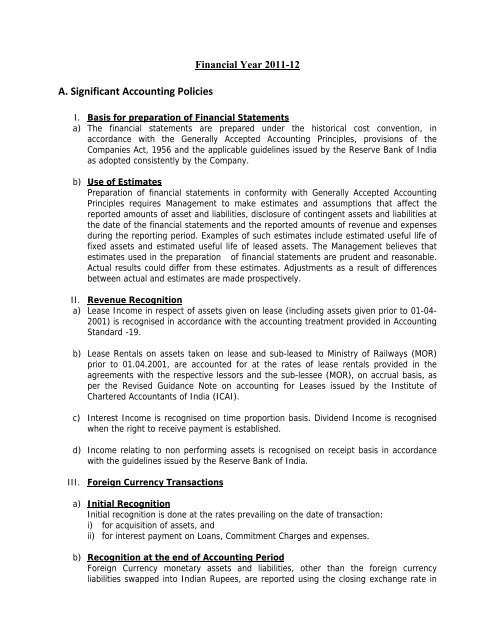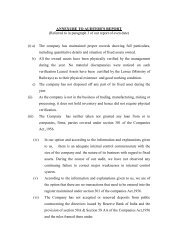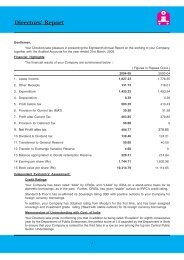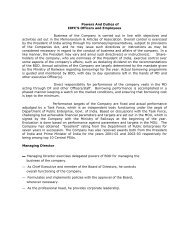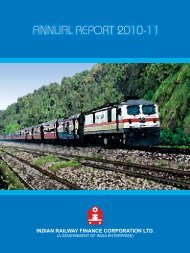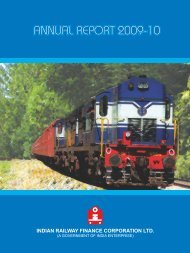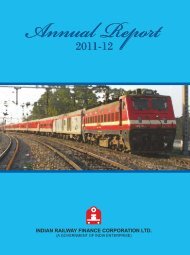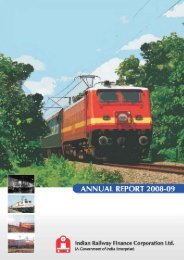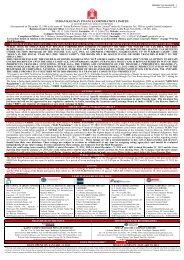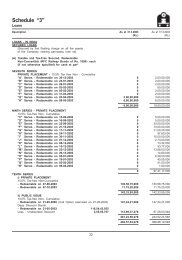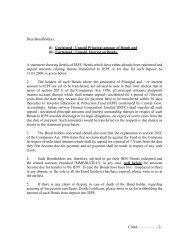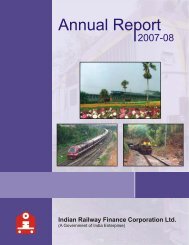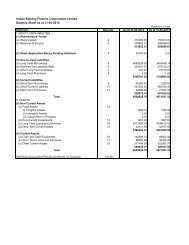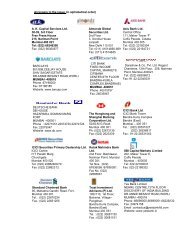Statement of Assets and Liabilities for last Five Years and Latest ...
Statement of Assets and Liabilities for last Five Years and Latest ...
Statement of Assets and Liabilities for last Five Years and Latest ...
You also want an ePaper? Increase the reach of your titles
YUMPU automatically turns print PDFs into web optimized ePapers that Google loves.
A. Significant Accounting PoliciesFinancial Year 2011-12I. Basis <strong>for</strong> preparation <strong>of</strong> Financial <strong>Statement</strong>sa) The financial statements are prepared under the historical cost convention, inaccordance with the Generally Accepted Accounting Principles, provisions <strong>of</strong> theCompanies Act, 1956 <strong>and</strong> the applicable guidelines issued by the Reserve Bank <strong>of</strong> Indiaas adopted consistently by the Company.b) Use <strong>of</strong> EstimatesPreparation <strong>of</strong> financial statements in con<strong>for</strong>mity with Generally Accepted AccountingPrinciples requires Management to make estimates <strong>and</strong> assumptions that affect thereported amounts <strong>of</strong> asset <strong>and</strong> liabilities, disclosure <strong>of</strong> contingent assets <strong>and</strong> liabilities atthe date <strong>of</strong> the financial statements <strong>and</strong> the reported amounts <strong>of</strong> revenue <strong>and</strong> expensesduring the reporting period. Examples <strong>of</strong> such estimates include estimated useful life <strong>of</strong>fixed assets <strong>and</strong> estimated useful life <strong>of</strong> leased assets. The Management believes thatestimates used in the preparation <strong>of</strong> financial statements are prudent <strong>and</strong> reasonable.Actual results could differ from these estimates. Adjustments as a result <strong>of</strong> differencesbetween actual <strong>and</strong> estimates are made prospectively.II. Revenue Recognitiona) Lease Income in respect <strong>of</strong> assets given on lease (including assets given prior to 01-04-2001) is recognised in accordance with the accounting treatment provided in AccountingSt<strong>and</strong>ard -19.b) Lease Rentals on assets taken on lease <strong>and</strong> sub-leased to Ministry <strong>of</strong> Railways (MOR)prior to 01.04.2001, are accounted <strong>for</strong> at the rates <strong>of</strong> lease rentals provided in theagreements with the respective lessors <strong>and</strong> the sub-lessee (MOR), on accrual basis, asper the Revised Guidance Note on accounting <strong>for</strong> Leases issued by the Institute <strong>of</strong>Chartered Accountants <strong>of</strong> India (ICAI).c) Interest Income is recognised on time proportion basis. Dividend Income is recognisedwhen the right to receive payment is established.d) Income relating to non per<strong>for</strong>ming assets is recognised on receipt basis in accordancewith the guidelines issued by the Reserve Bank <strong>of</strong> India.III. Foreign Currency Transactionsa) Initial RecognitionInitial recognition is done at the rates prevailing on the date <strong>of</strong> transaction:i) <strong>for</strong> acquisition <strong>of</strong> assets, <strong>and</strong>ii) <strong>for</strong> interest payment on Loans, Commitment Charges <strong>and</strong> expenses.b) Recognition at the end <strong>of</strong> Accounting PeriodForeign Currency monetary assets <strong>and</strong> liabilities, other than the <strong>for</strong>eign currencyliabilities swapped into Indian Rupees, are reported using the closing exchange rate in


